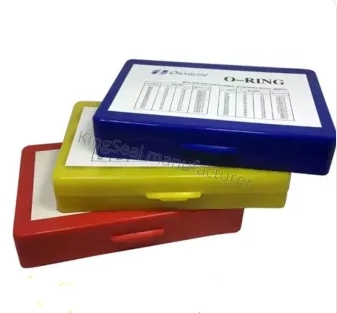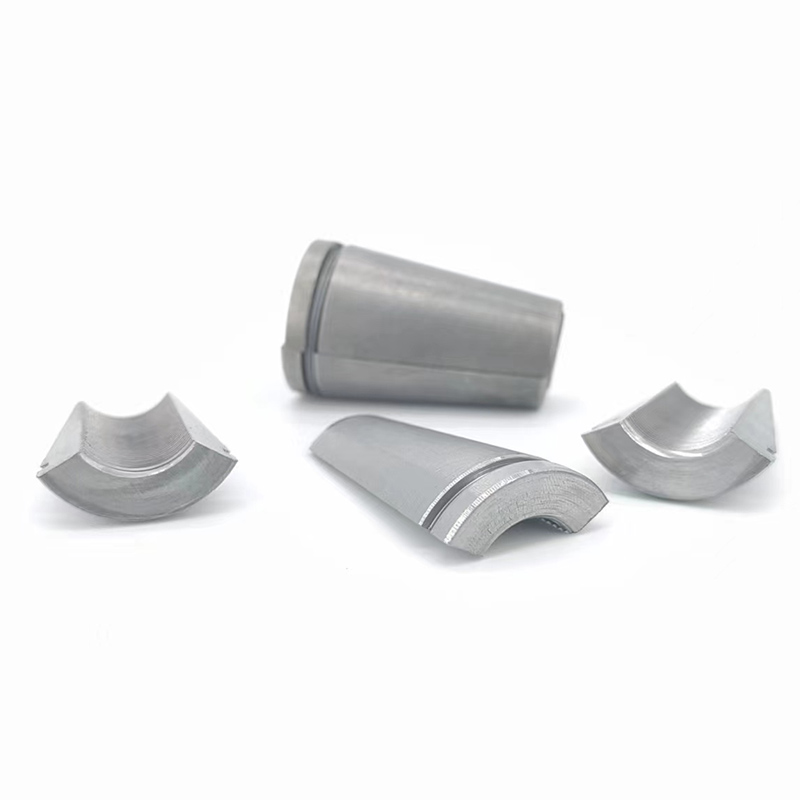O-rings are essential components used in a wide range of sealing applications. They come in various materials, each with its unique properties and suitability for specific environments and applications. In this article, we will delve into the materials typically included in an o-ring kit. By understanding the different options available, you can choose the right material to ensure effective sealing and optimal performance for your specific needs.

Nitrile (Buna-N):
Nitrile o-rings, also known as Buna-N, are one of the most commonly used materials. They exhibit excellent resistance to oils, fuels, and greases, making them suitable for a wide range of applications in industries such as automotive, oil and gas, and machinery. Nitrile o-rings are cost-effective and offer good abrasion resistance.
Silicone:
Silicone o-rings are known for their excellent high-temperature resistance, making them ideal for applications where extreme heat is a factor. They can withstand temperatures ranging from -60°C to 230°C (-76°F to 446°F) and provide good resistance to ozone, weathering, and aging. Silicone o-rings are often used in food and beverage, medical, and pharmaceutical industries.
Fluorocarbon (Viton):
Fluorocarbon o-rings, commonly referred to as Viton, are highly resistant to chemicals, fuels, oils, and high temperatures. They can withstand temperatures ranging from -20°C to 204°C (-4°F to 400°F) and are often used in applications involving aggressive chemicals or extreme environments. Viton o-rings find applications in aerospace, automotive, and chemical processing industries.
EPDM:
EPDM (Ethylene Propylene Diene Monomer) o-rings offer excellent resistance to weathering, ozone, and UV exposure. They are known for their flexibility, good electrical insulation properties, and resistance to water and steam. EPDM o-rings are commonly used in outdoor applications, HVAC systems, and water-related industries.
Explore more:Benefits of Using Sliding Window and Door Single RollersHexagon Wire Mesh: Unraveling the Wonders of Hexagonal Metal Mesh!What are the limitations of cast steel ball valves?What are the types of post-tensioning systems?Unlocking the Flow: Mastering the Dynamics of Butterfly ValvesCPS Diamond Tools: Are They Really a Game-Changer in the Industry?What is the best tool to grind concrete with?Neoprene:
Neoprene o-rings are widely recognized for their excellent resistance to oils, solvents, and ozone. They offer good stability in a wide temperature range, from -45°C to 121°C (-49°F to 250°F), and are commonly used in applications involving refrigerants, hydraulic fluids, and automotive systems.
Polyurethane:
Polyurethane o-rings possess exceptional abrasion resistance, high tensile strength, and tear resistance. They are suitable for dynamic sealing applications, especially those involving hydraulic and pneumatic systems. Polyurethane o-rings are known for their durability and resistance to wear, making them ideal for heavy-duty applications.
PTFE (Teflon):
PTFE o-rings, made from polytetrafluoroethylene, offer excellent resistance to chemicals, high temperatures, and low friction. They are often used in applications where aggressive chemicals and extreme temperatures are present. PTFE o-rings are commonly found in chemical processing, pharmaceutical, and food manufacturing industries.
Other Materials:
In addition to the materials mentioned above, o-ring kits may include specialty materials such as Aflas (for chemical resistance), HNBR (for enhanced oil and heat resistance), and Kalrez (for extreme chemical resistance and high-temperature applications).
Conclusion:
When it comes to choosing the right o-ring kit for your application, understanding the materials available is essential. Each material offers specific properties that make it suitable for certain environments and applications. By considering factors such as chemical compatibility, temperature range, and sealing requirements, you can select the appropriate material that ensures effective sealing and enhances the performance and longevity of your application.
Explore more:How to use Aluminum Window and Door Hinge?Ductile Iron Pipe vs. PVC Pipe: A Comparative AnalysisWhat are the criteria for selecting a control valve?Threaded Bar Grades: Understanding the Strength RatingsWhy are gabions so expensive?How much is a wok worth?What are the top reasons companies should invest in choke manifold drilling equipment?












Comments
Please Join Us to post.
0